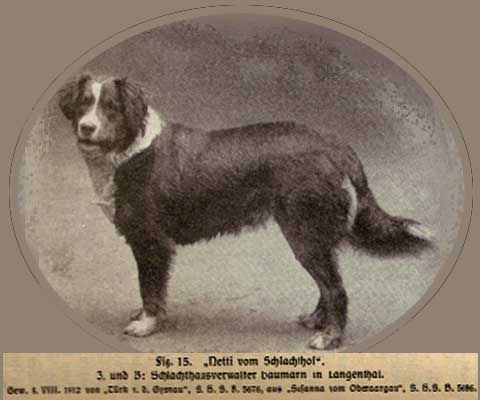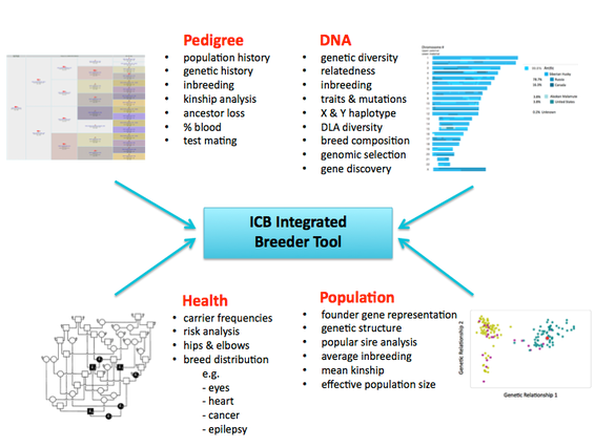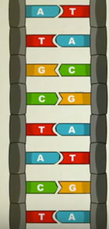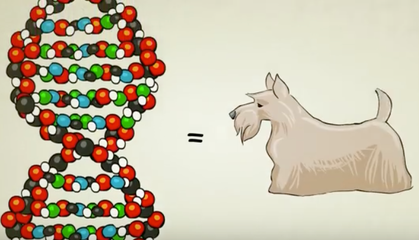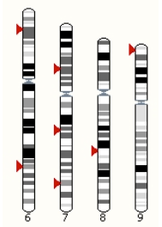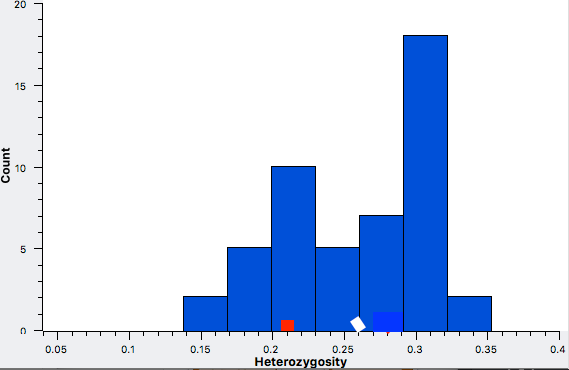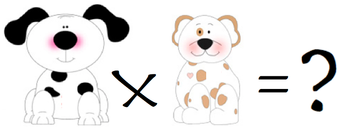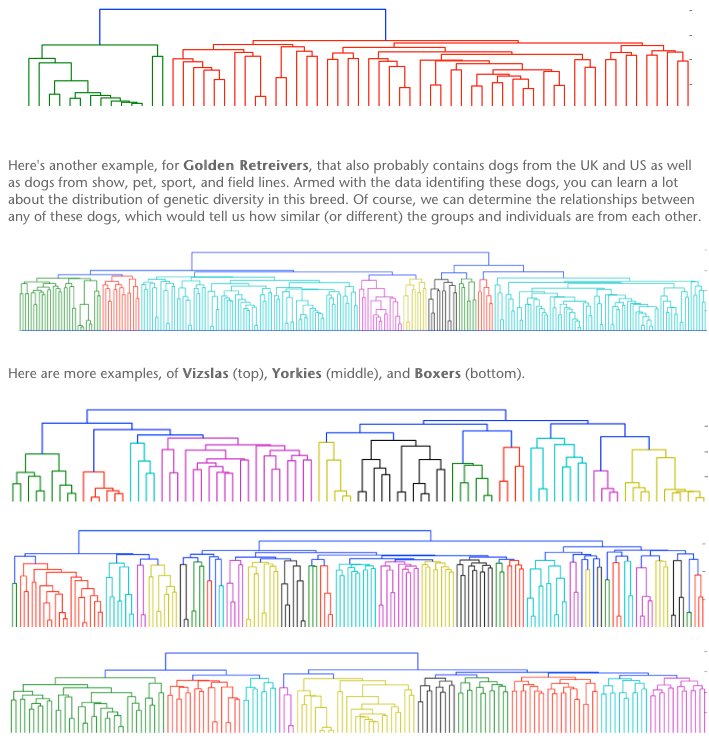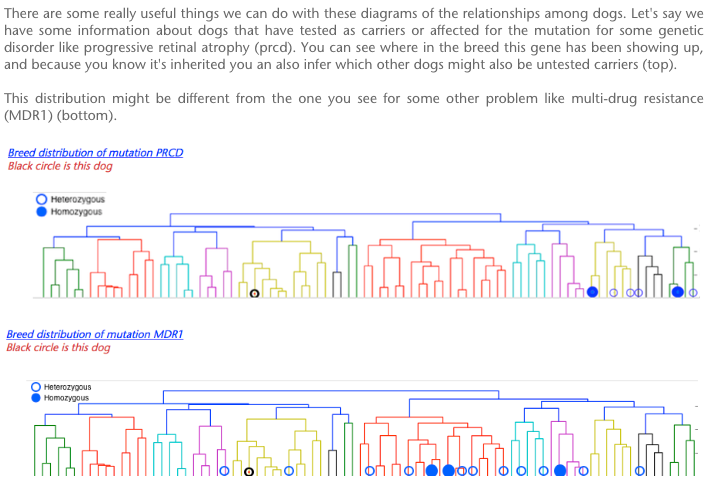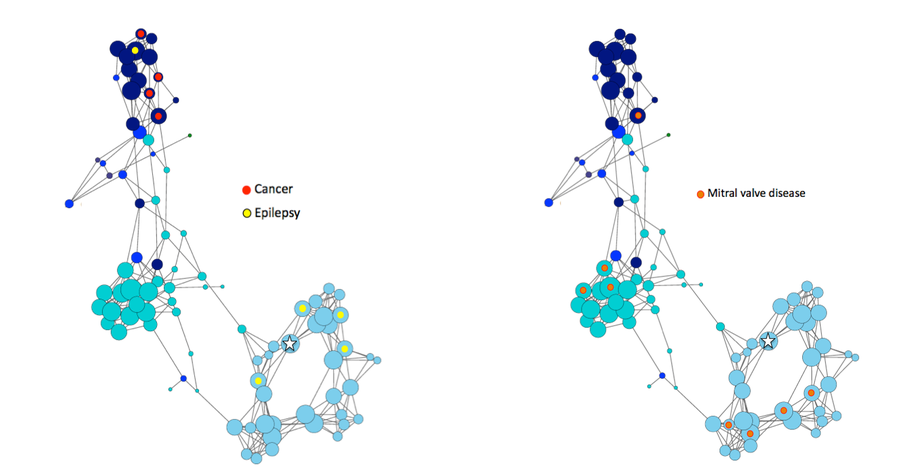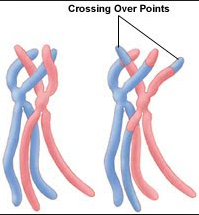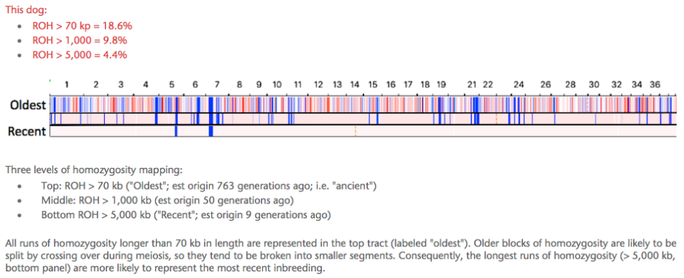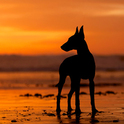| Breeding purebred dogs has never been more challenging than it is today. Breeders have to manage fewer dogs in a smaller gene pool with a list of potential genetic disorders that keeps getting longer. If diligence and commitment were all that's needed to produce healthy dogs, every puppy would live a long, happy life. Fortunately, we have amazing tools now that can help take the guesswork out of identifying and solving problems. Learn about them and how to use them, and you can address the challenges with information and a sound strategy. The things we don't know or can't know will always be essential to the "art" of breeding - the eye, the gut, and the heart - but science and the right tools can help remove a lot of the mystery. |
The ICB Breeder Tool is an online, interactive genetic management system that incorporates pedigree, DNA, and health information in a single, integrated framework. It is designed to address the genetics of both your next litter and the breed as a whole, so you can meet your goals as a breeder at the same time as you ensure that the health of the gene pool for the future.
Here's a link to specifics and order information, but read on for more information about what it can do!
The ICB Breeder Tool is based on analysis of about 230,000 markers distributed evenly over all of the chromosomes, including the mitochondrial DNA (which is inherited from the mother) and the Y chromosome (which is inherited from the father). There are 38 autosomal chromosomes in the dog, plus the X and Y sex chromosomes. That means that there are on average more than 5,000 markers on each chromosome.
| Each marker is for a specific nucleotide, of which there are four types: A, T, C, and G. These are the molecules that make up the genes that are coiled into a double helix to form the chromosomes. The markers are called SNPs ("snips"), for "single nucleotide polymorphism". This simply means a nucleotide that is variable from animal to animal. Some of the SNPs mark the nucleotides found in mutated genes, and this enables us to tell if an animal has a normal copy of a gene or a mutation. |
The ICB Breeder Tool
| Mutation and Trait Testing The DNA analysis provides information for > 150 canine mutations as well as genes for particular traits like coat color and fur length. All of the mutation and traits tests are done at once on a single sample of DNA. Most labs produce only this information for the specific tested dog. It's up to you to figure out how to use this information. As you will see, there is so much more we can learn from our DNA analysis. |
About 70% of the genetic problems in dogs are caused by recessive mutations.
A dog that inherits two copies of a broken gene will be affected. The unique features of every breed are maintained by breeding related dogs, but related dogs also are likely to share mutations and this is what causes the problems. Managing inbreeding is the only way to effectively reduce and manage genetic disorders caused by recessive mutations, so knowing the genetic relatedness of dogs you want to breed is essential.
- the amount of genetic heterozygosity of the dog
- the genetic similarity of two or more dogs (e.g., comparing a bitch to a potential sire, or the puppies in a litter with each other.
The two nucleotides at each SNP (paternal and maternal) are identified, and the fraction of the genome that is homozygous and heterozygous is reported as "Heterozygosity", which ranges from 1 (all SNPs are heterozygous) to 0 (none heterozygous). This is calculated by dividing the number of heterozygous SNPs to the total number of markers evaluated.
Evaluating Breeding Options
This is where the rubber meets the road. The more you know about the genetics of the dogs you consider for sire, the better you will be able to predict what you will get in your next litter. DNA testing can now provide information about some specific genes of importance for both health and physical phenotype. But we have tests for only a fraction of the known genetic disorders in dogs, and there are also the issues of fertility, lifespan, temperament, and other traits for which many genes are involved. We need a management strategy for those as well.
| We can directly compare the DNA data for the bitch with that of each potential sire and determine how similar they are. The first bar in this graph compares the bitch with herself, and of course she is 100% similar. Then comparing her to the four sires, there is a range in genetic similarity from 4% to 48%. If these sires all have the type and traits you're looking for, selecting one with lower similarity (Sires 2, 3, or 4) will produce offspring with the most genetic diversity and reduce the risk of genetic disorders. |
Genetic Diversity & Population Structure
The ICB Breeder Tool can compare the DNA data for many dogs to determine genetic relationships among them and display this information in a variety of ways.
Dendrograms
Learn more about using genetic relatedness and dendrograms to manage genetic disorders when you don't know anything about the cause.
The ICB Breeder Tool can also display the same genetic data in a very different way, here as point clusters that can show very complex relationships between animals. This can be especially useful for polygenic or complex traits for which we don't know the causative genes.
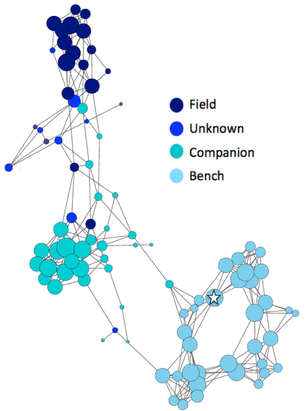
These diagrams cluster the animals by genetic similarity and, together with information about a trait or other characteristic of the dogs, it can reveal subpopulations or clusters and show how they are related. Here you can see clusters of dogs breed for different purposes (top), and below you an identify the relationships among dogs with different health issues like cancer, epilepsy, or heart disease.
The most powerful genetic tools ever
We aim to transform the way we breed dogs
by providing the information breeders need
to produce healthy, happy family dogs.
Check out the list of available DNA tests and a summary of the analyses included in the report for each dog.
The ICB Breeder Tool is in beta testing and is available now at a great price.
If you'd like to take a peek at what else we're working on, read on!
Are you a Power User? If you are, read on!
We're going to show you something that seems a little crazy and a lot more complicated than it really is. But it's really, really cool, so don't let your eyes glaze over. I promise, it will be worth it!
Inbreeding results in homozygosity, and in more inbred animals regions of homozygosity tend to form blocks that get longer and longer. These are called "runs of homozygosity" (ROH).
Because a DNA analysis can tell us not only the amount of homozygosity in an animal's genome, it can also show us where it is, it is possible to produce a map of the chromosomes that displays these regions of homozygosity. We can line up the chromosomes end to end, from 1 to 38, and color code each SNP marker as blue for homozygous or red for heterozygous.
This is the ROH scan for a Whippet. The chromosome numbers are indicated across the top, and the strip below indicates the location of markers that are homozygous in blue, and red indicates heterozygous markers.
You can see areas where there are regions of high homozygosity as blocks of blue, such as on chromosomes 3 and 4.
We can zoom in on a scan to see more detail. This is a set of scans for three animals with the chromosome numbers across the top indicating that this is chromosome 7 with some of 6 and 8 on either side.
You can clearly see that the first dog has long stretches of high homozygosity, while the regions of homozogity of the other two dogs are much smaller and more evenly distributed over the chromosomes.
Inbreeding tends to produce larger and larger blocks of homozygosity. But each generation, there is a stage in the formation of the gametes (eggs and sperm) called meiosis, in which DNA is rearranged by an event called "crossing over". This breaks off and swaps sections between the pair of chromosome. If these breaks occur in regions of homozygosity, the blocks will be broken up into smaller blocks.
Here's an example of a scan from a single dog. It was scanned at three different block sizes, short (70 kb - kilobases; top), medium (1000kb; middle), and long (5000kb; bottom). Runs of homozygosity are in blue.
The top scan for blocks longer than 70kb also captures the very long blocks, so the blocks on the bottom strip appear on the top one as well. But the short scans also reveal that there are many regions of shorter runs of homozygosity that reflect the accumulated inbreeding over hundreds of generations. This historical inbreeding might even have occurred even before the origin of the breed.
First, because they document homozygosity, we can use the total length of the homozygous blocks to compute the actual level of inbreeding. We simply add up the lengths of the blocks and divide by the total length of the genome, and multiply by 100 to express it as a percentage. So for the dog above using the scan for the shortest blocks (70kb), the inbreeding level for this dog is 18.6%.
Another useful thing we can do is compare the ROH scans for multiple dogs at a time. Below is a panel of scans for 12 Bernese Mountain dogs, all scanned for runs of homozygosity longer than 1000 kb, over all 38 chromosomes.
How can a breeder use this information?
Let's say that you're contemplating using several different sires with similar levels of inbreeding. By comparing the patterns of homozygosity in a bitch and potential sire, you can choose the dog that reduces the areas of shared homozogysity and will produce less homozygosity in the puppies.
Mixed breed dogs
Jack Russell Terrier
Doberman
Chinook
There is more information and examples of Runs of Homozygosity in our two-part tutorial HERE.
